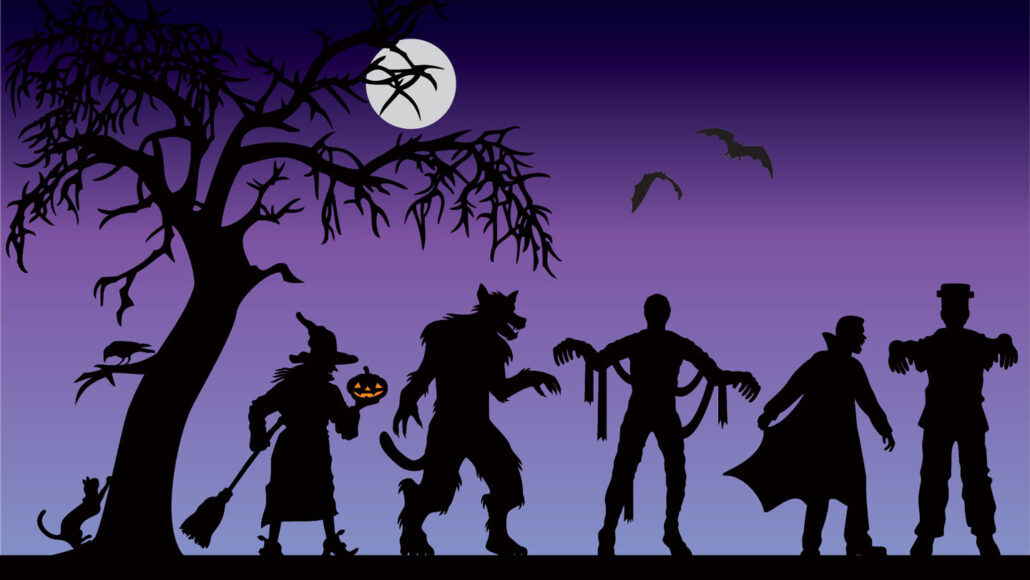Let’s learn about the creatures of Halloween
Meet the real-life vampires and zombies of the animal kingdom, and learn why some people think ghosts and curses are real

Science has a lot to say about spooky subjects, like how animals can become real-life zombies and why some people think they're being haunted.
digital_dreamland/iStock/Getty Images Plus
Halloween is a holiday about make-believe. It’s a night for telling ghost stories and dressing up as witches and werewolves. But not all Halloween creatures are fictional. And even the most mythical ones often have closer ties to reality than you might think.
Vampires, for instance, are very real. They’re not the kind that lurk around dark castles wearing capes. Nor the sparkly Twilight variety. We’re talking about animals that suck the blood of their prey. Vampire bats are just one example. Did you know that ticks, bed bugs and mosquitoes also count as vampires? The ultimate Halloween mascot, though, might be the vampire spider. This critter eats blood-sucking mosquitoes. Even some parasitic plants act like vampires, slurping nutrients out of their neighbors.
The animal kingdom is also full of zombies. These creatures aren’t undead. But they are pretty brain-dead. An animal can get zombified when a fungus, worm or other parasite infects its mind. The parasite’s goal? To make the zombie die in a way that helps the parasite. Single-celled parasites called Toxoplasma gondii, for instance, can hijack the minds of rats. The microbes make those zombie rats attracted to the scent of cat pee. As a result, the rats are easier for cats to gobble up. That’s good for the rat-controlling parasite, which can only complete its life cycle inside a cat.
Other classic Halloween characters, like ghosts, are just figments of our imagination. But science is revealing why some people think spirits are real. In some cases, a person might be experiencing sleep paralysis. People with that condition basically dream with their eyes open. Others who pay little attention to their surroundings might mistake the actions of living people for ghosts.
Scientists have also busted myths around Halloween creatures like mummies. Mummies are, of course, real. These corpses provide useful windows into the ancient past of Egypt, Europe and South America. But they don’t rise from the dead. And mummy curses? Not so real — even if a famous explorer did die shortly after entering King Tut’s tomb. The two events only seem related because the human brain is wired to find connections even where there aren’t any, scientists say.
But science isn’t all about throwing cold water on fantastical ideas. Check out the Technically Fiction series for the science on how to make witchcraft real and build a dragon.
Want to know more? We’ve got some stories to get you started:
What the mummy’s curse reveals about your brain A man died soon after opening a mummy’s tomb. But don’t assume the mummy killed him. Statistics help explain why coincidences may not be meaningful. (1/14/2021) Readability: 7.2
Here’s how cockroaches fight off zombie-makers Stand tall. Kick, kick and kick some more. Scientists observed these successful tactics among some study subjects that avoided becoming true zombies. (10/31/2018) Readability: 6.0
True vampires Forget Count Dracula or Twilight’s Edward and Bella. Many creatures have a true thirst for blood, and here’s why. (10/28/2013) Readability: 6.3
Explore more
Explainer: Eek! What if you get bed bugs?
Wily bacteria create ‘zombie’ plants
Bacteria and bugs will save us from the zombie apocalypse
3-D printing helps resurrect an ancient Egyptian mummy’s voice
Ancient Egyptian mummy tattoos come to light
Bee parasite is more werewolf than vampire
Ancient child’s ‘vampire burial’ suggests Romans feared the walking dead
Vampires’ gift of ‘blood honey’
‘Vampire’ parasite challenges the definition of a plant
Fossils show sign of ancient vampire microbes
Sucking blood isn’t an easy life, even for vampires
Activities
STEAM Powered Family has 31 days’ worth of Halloween-themed STEM activities. Explore thermodynamics with flying teabag ghosts. Learn about water stratification using candy. Other activities put a Halloween twist on the classic volcano experiment and show you how to make your own glow-in-the-dark lava lamp.







